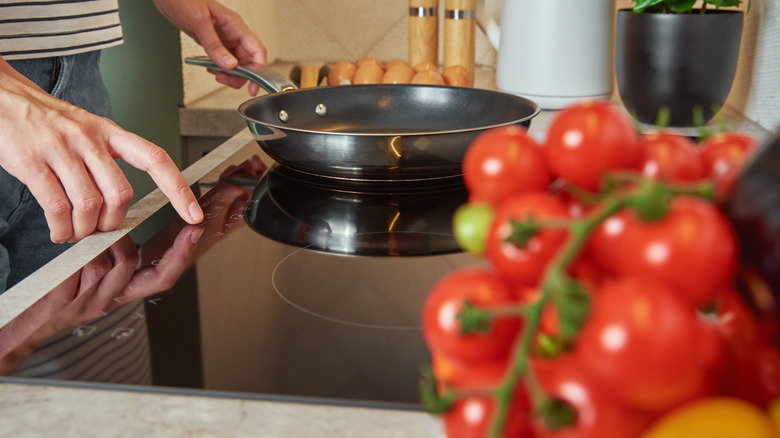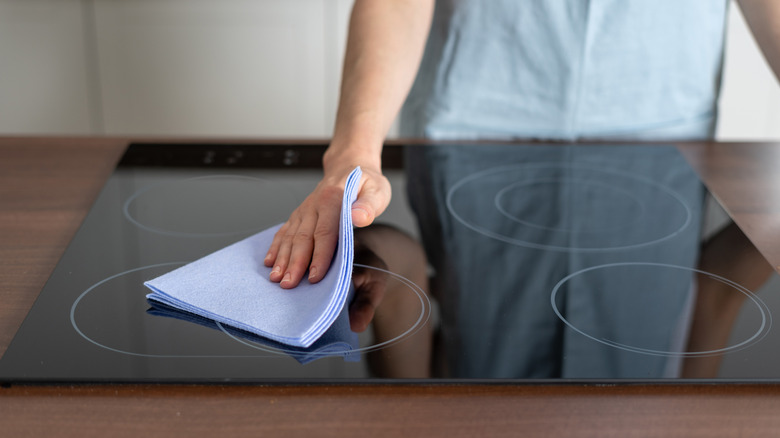Why Your Glass Stovetop Looks Cloudy (And How To Fix It)
We may receive a commission on purchases made from links.
Glass stovetops are popular for their smooth surfaces that are easy to clean and maintain compared with their coiled counterparts. In fact, glass surfaces are even a part of the cooktop trend that's making kitchens safer and more efficient. With all their advantages, though, glass cooktop surfaces aren't perfect, and they can still get dirty and damaged. Glass stovetops can look cloudy from a variety of cooking and cleaning related activities. The good news is there are ways you can help address these issues without damaging the glass surface during the process.
Everyone who owns a glass stovetop ought to consider quickly cleaning the appliance after every use. To prevent caked-on messes and future cleaning headaches, it's best to wipe down your stovetop after cooking with the appliance, but only when it's cooled down. Alternatively, you can use a small amount of dish soap with water for food and stain removal. For extra preventive maintenance, consider deep cleaning the appliance at least once per week. Micro-fiber cloths can be your best friends when cleaning these glass surfaces because they won't cause damage like paper towels or dish towels might. In fact, paper towels are considered among the ways you should never clean a glass stovetop because of the risk of micro-scratches. Taking care of your glass stovetop with regular cleanings can prevent cloudiness to a certain degree, but there's also some other causes and remedies to be aware of.
Causes of a cloudy glass stovetop, and what you can do
There are a couple of reasons why a glass stovetop may turn cloudy. The first may be related to hard water, as the minerals can build up on the surface and cause cloudiness on your glass stovetop over time. Waiting to wipe up food spills and stains can also lead to a cloudy appearance as well as permanent damage. Sugar-based substances and boiled water splatters are some of the worst offenders.
Mild cloudiness from cooking spills might be fixed with a simple cleaning. Wipe down the entire glass surface after cooking with a damp (but not soaking wet) micro-fiber cloth. Use a separate cloth to remove excess water to prevent possible cloudiness from hard water minerals. Always use gentle circular motions when wiping down a glass stovetop so you don't accidentally damage the surface.
If your stovetop still looks cloudy after a quick wipe down, you may need to move on to stronger remedies. Consider getting your glass stovetop sparkling clean with an affordable product without causing damage — for example, Weiman's 3-in-1 Daily Cleaner Spray is a highly rated glass cooktop product. Aside from commercial cleaners, you can try equal parts water and white vinegar in a spray bottle or apply a paste of baking soda and water directly to the cloudy glass. Be sure to completely wipe off any excess product to prevent streaks, and never use abrasive materials such as scrubbing sponges. If you're still seeing cloudiness on your glass stovetop despite taking these measures, consider talking with an appliance professional for next steps.

